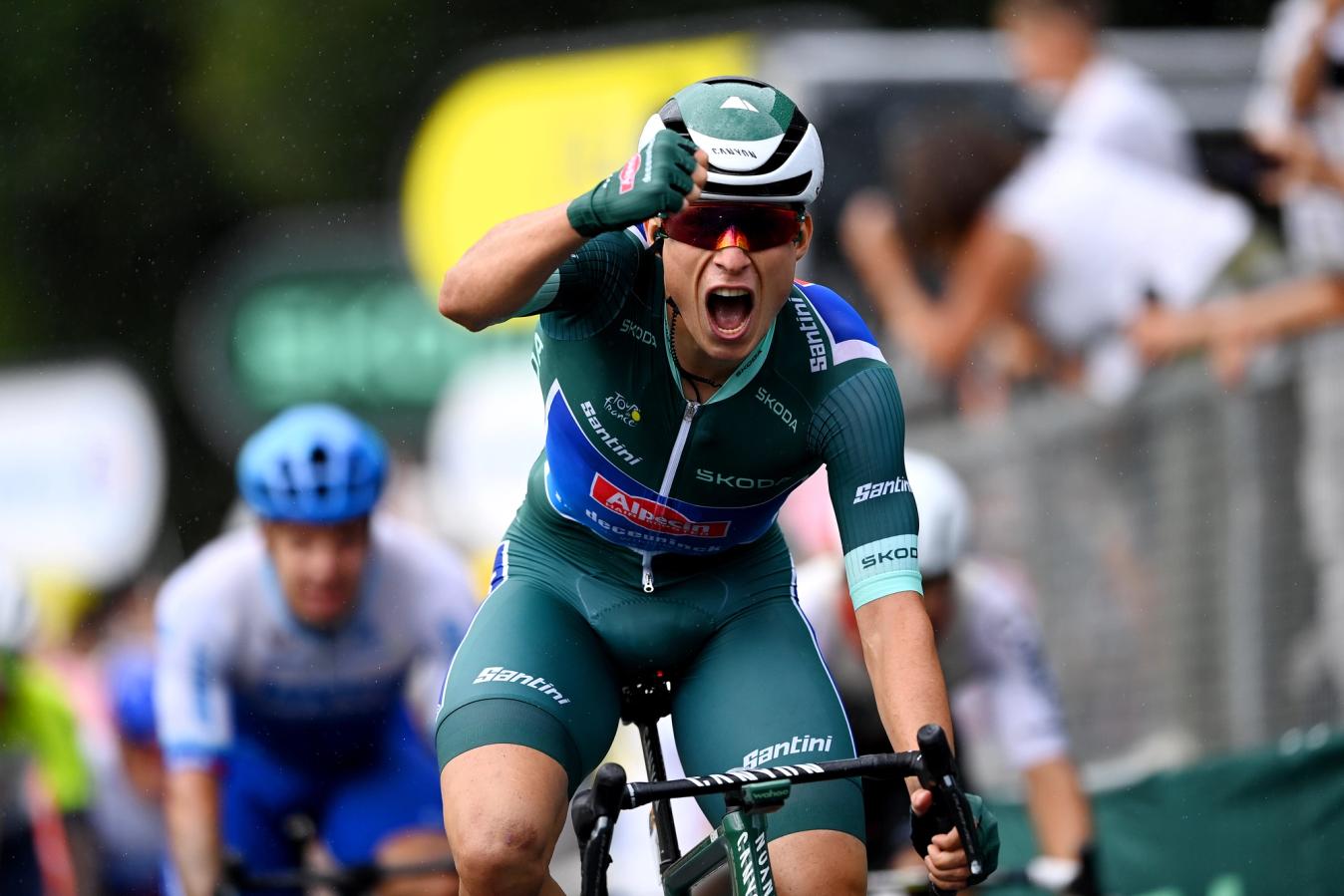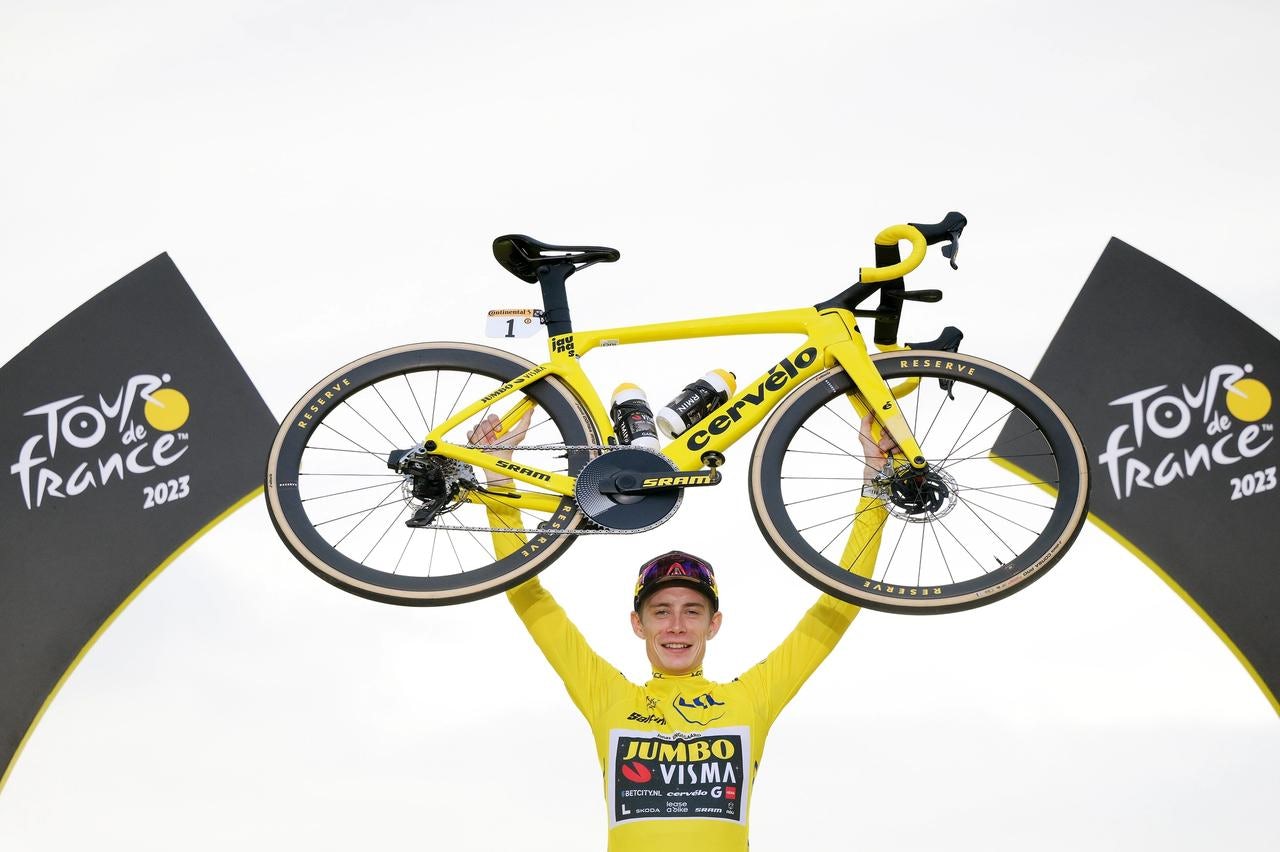Tour de France tech takeaways: The era of the do-it-all superbike
Are lightweight bikes making a comeback? And is 1x here to stay?
Tom Hallam-Gravells
Online Production Editor
© Velo Collection (David Ramos) / Getty Images
Jonas Vingegaard and his Cervélo S5
Now that the Tour de France has concluded in Paris and the yellow jersey has been awarded, it’s a good time for some technology-based reflection from the most important event on the calendar.
Cycling’s biggest race is always a hotbed for cool tech and this year was no different, with everything from new lightweight bikes to 1x setups on show.
The tech world moves fast so we’ve pulled together a list of the top trends we spotted at the race to judge which will flourish, and which will fade into the background.
A comeback for climbing bikes?
Just as the Tour de France was winding to a close last Thursday, Orbea launched its new Orca road bike.
It didn’t taste any action at the race, instead making its race debut with Ceratizit-WNT at the Tour de France Femmes avec Zwift this week, but its release garnered plenty of attention.
In a complete rejection of everything the industry currently holds dear, Orbea has gone off-piste, ignoring aerodynamics completely to take the Orca solely down a lightweight route. There are no aero-optimised tube shapes, or claims that it’s a certain number of watts faster on flat roads. It’s purely designed to be as lightweight as possible, because Orbea believes that weight still trumps aerodynamics in the climbing stakes.
This anti-aero, all-out lightweight approach is rare in modern cycling, including at the Tour where Michael Woods (Israel-Premier Tech) climbed to stage 9 victory atop the Puy de Dôme (13.3km at 7.7%) on the Factor Ostro VAM aero bike.
The Canadian could have used the O2 VAM, which was available to the team despite not being officially released until a day after his victory. It certainly had the credentials for the job, with Factor billing it as the “world’s fastest climbing bike”. So why did Woods opt for Factor’s aero option instead?
Beyond the familiarity of having raced it before, the team presumably believed that the performance difference between the two bikes on the climb would only be minimal.
That makes sense as the benefits of pure climbing bikes is their weight, but that weight has its limits - 6.8kg to be precise. Teams can’t go below that because of the UCI’s regulations. With many all-round superbikes and even some pure aero bikes - like the Factor Ostro VAM - knocking on that limit, pure climbing bikes that are solely focussed on being lightweight lose their edge.
That’s why more and more brands are giving their climbing bikes aero makeovers. Very few are fighting the aero tide, Orbea being a rare case, and we don’t expect that to change anytime soon.
Is it the era of the superbike?
If climbing bikes are unlikely to make a comeback, does that mean that we’re firmly in the era of the all-round superbike? Based on the stage-winning bikes at this year’s race, it certainly looks that way.
Only seven stages were won on dedicated aero bikes. Four of those were taken by Jasper Philipsen (Alpecin-Deceuninck) in sprints. The majority of the rest of the victories were taken on do-it-all superbikes.

© Velo Collection (TDW) / Getty Images
Jasper Philipsen took his four victories atop the Canyon Aeroad.
Many teams now favour a one-bike solution like the Specialized Tarmac SL7, Pinarello Dogma or Colnago V4Rs which they use on every stage of the race, barring time trials. All of these bikes blend a low weight and aero features into one package.
It’s hard to see that pattern changing anytime soon as most brands can add aero features to their bikes while still hitting the UCI’s 6.8kg limit.
Like climbing bikes, dedicated aero bikes could soon disappear in favour of the more rounded superbike, with the death knell already sounded for some models, including Specialized’s very popular Venge back in 2020.
Is 1x here to stay?
At this point in 2023 the use of a 1x set-up in a race is hardly noteworthy. Wout van Aert (Jumbo-Vimsa) used the set-up as early as Milan-San Remo in March.
The headlines ramped up in May when Primož Roglič (Jumbo-Visma) turned the tables on Geraint Thomas (Ineos Grenadiers) at the Giro d’Italia, using a 1x setup with gravel gearing to overcome his rival in the stage 20 individual time trial.
Even eventual 2023 Tour winner Jonas Vingegaard (Jumbo-Visma) joined the 1x train at the Critérium du Dauphiné, before we spotted his Cervélo S5 once again specced with 1x ahead of the Grand Départ in Spain.
After a few years in the wilderness, 1x set-ups are snowballing into prominence, but despite grabbing some headlines, Jumbo-Visma only used the set-up sparingly at the Tour, still favouring 2x on most stages. The fact that the biggest team in the world is exploring 1x is still sure to catch the attention of other teams, though.
However, unless those other teams are sponsored by SRAM, there isn’t much they can do. The American brand is the only major groupset manufacturer (we’re including Shimano and Campagnolo in this three-brand list) who has a 1x option for its performance road groupsets.
Anyone using Shimano or Campagnolo is stuck with 2x for the time being, although there’s still a lot of development required before 1x becomes a regular, viable option, even for SRAM-sponsored teams.
More tube shape tinkering
In the world of marginal gains, where the smallest aero advantage can decide a stage, every brand is always on the hunt for any tech advantage they can find. This leads to constant tweaking of tube shapes.
Of the bikes at the Tour de France, the aforementioned Factor O2 VAM caught our eye. Its top tube is incredibly thin - the narrowest we’ve seen - tapering to only 10mm in height near the junction with the seat tube.
Specialized also appears to be trying new shapes with the yet-to-be-confirmed Tarmac SL8. Images purporting to be the bike were recently leaked during the Tour, and if real, the new bike has a noticeably bulbous head tube.
Then there’s Trek’s latest Madone which, to the untrained eye, has a large hole in the seat tube with the seatpost seemingly floating above it.
Brands always play around with tube shapes and it’s constantly leading to intriguing new designs, so we’ll be interested to see where that leads to by the time the 2024 Tour arrives.





MAIN.jpg?w=600&auto=format)







.jpg?w=600&auto=format)



